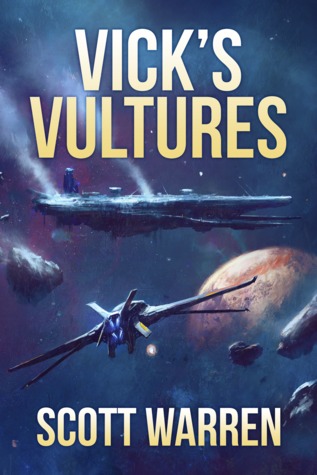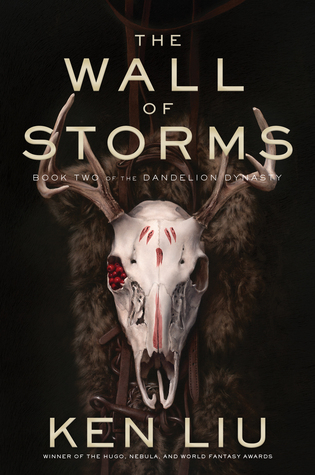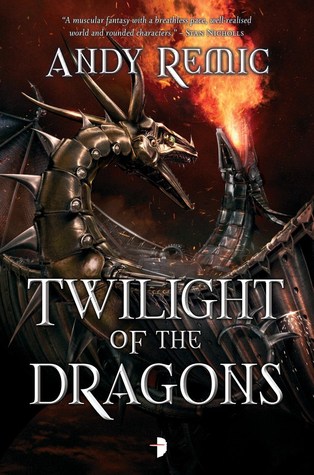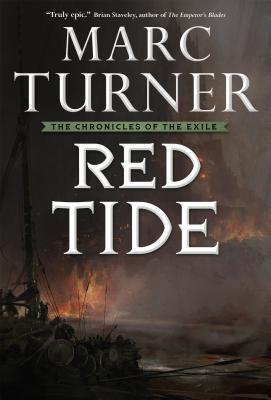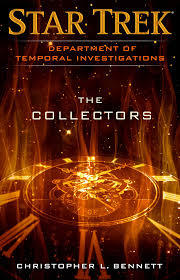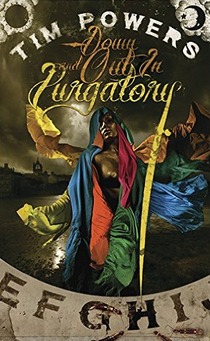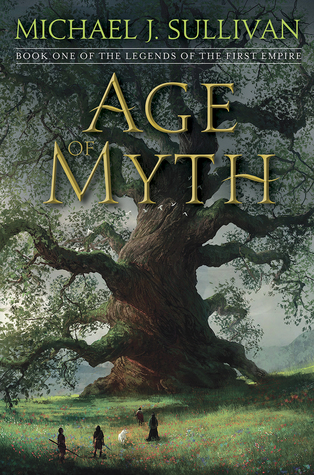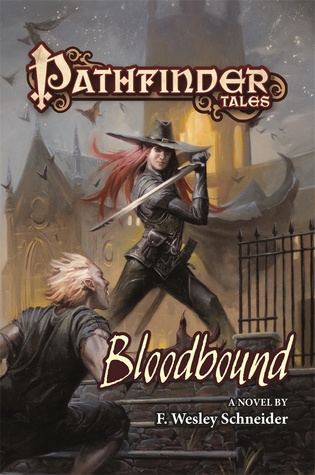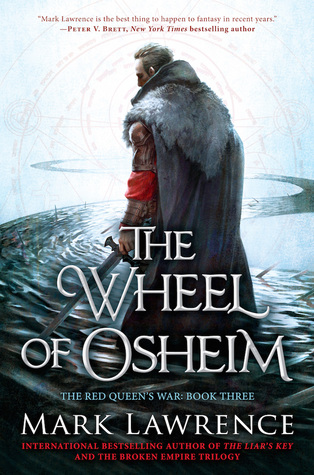When I was first offered a copy of Vick’s Vultures for review, the press release promised a mix of Firefly and Mad Max. That was enough to catch my interest. When I had a chance to talk with Scott Warren about the book, he also mentioned Discworld having influenced his tone. That was enough to pique my interest. When I actually sat down to read it, I discovered that its Firefly sense of roguish adventure was cut with a good deal of Star Trek vibes. That was enough to sustain my interest. I loved the concept of this right from the start. Humanity has progressed to the point where we’re a legitimate star-faring race, but in doing so we’ve discovered how insignificant we are in the grand scheme of things. Races like the Malagath, the Dirregaunt, and the Kossovoldt have been around for eons, progressing far beyond anything to which we could aspire. They are the forces of power in the universe, with each of them controlling thousands of worlds. In order to compete, we have legitimized a form of interstellar piracy, scavenging alien ships for whatever technology and secrets we can, making our own ships into mechanical monstrosities of mismatch technology. Culturally, those races have…
In my review of Ken Liu’s debut, I said it possessed all the epic grandeur, intelligence, and dignity of a Guy Gavriel Kay novel. Now, having read the follow-up, I am starting to wonder if anybody has ever seen the two of them in the same room together. Okay, so I’m kidding – or, at least, half-kidding – but The Wall of Storms is precisely the kind of sweeping, character-driven epic of cultural mythology that so very few authors could attempt, much less manage so successfully. The first half of the novel (and we’re talking several hundred pages) is largely dedicated to developing a new character who had no role to play in The Grace of Kings. Zomi is a smart, philosophical young woman who thinks and acts in a manner that is disturbingly progressive for an already strained empire. Where her connection to the tale comes in is through Luan Zya, the man who advised the Emperor to betray his best friend for the greater good, and who then walked away from it all. Through alternating chapters we see the progress of the imperial examinations in which Zomi is to take part, and the learnings and journeys she shared with Luan to get there. It makes for an…
I have to admit, I’m of two minds regarding Twilight of the Dragons. Yes, it’s a fun, foul-mouthed, frantic sequel to both The Dragon Engine and The White Towers, but its narrative quality is all over the place. Much of it reads like a first draft manuscript, awkward and juvenile in places, that somehow sneaked past the editor. Structurally, it feels like it’s one step removed from being polished as well, jumping between storylines, with random flashback chapters interspersed, and some definite pacing issues. It made for a frustrating read, which (unfortunately) took something away from the enjoyment. Having said all that, this is a bold, brash, bloody story in which Andy Remic returns to the world of grimdark fantasy. One story thread catches up with the survivors of the The Dragon Engine, following their war-weary, emotionally exhausted descent into the bowels of Wyrmblood. These are adventurers who suffered greatly in the last book – beatings, torture, and even rape – and it weighs heavily upon them. As depressing as it made those scenes, I admired Remic for not just shrugging off the pain and going all gung-ho with the heroics. The other story thread catches up with the survivors…
Taking place almost immediately on the heels of Dragon Hunters, this is a story that reaches back to connect with some of the characters and stories of When the Heavens Fall. It’s the book in the series where everything begins to come together, and where we begin to see hints of the bigger picture into which all the pieces will eventually fit. My first impression of Red Tide was that it’s a more human tale, less about gods and monsters than first two books, which fits with the conflict at the heart of the story. I went into it being most excited by Romany’s return, but I ended up looking forward to the stories of Amerel Duquy and Galantas Galair the most. For me, they were the heart of the book. As for Karmel and Caval, if you thought they had personal issues between them in the last book, those conflicts really come to a head here, both in terms of faith and family. Initially, I didn’t like them as much here, finding their scenes a bit dry and impersonal, but looking back I can see how that was just me getting caught up in their tensions. Commander Eremo, leader…
Serving as a prequel to Twelve Kings in Sharakhai, the first book of The Song of Shattered Sands, Of Sand and Malice Made is a thoroughly entertaining story that adds another layer to the world that Bradley P. Beaulieu has created. Consisting of three interlinked tales, this is a book that goes beyond mere setting and culture to put a true Arabian Nights spin on epic fantasy. That fact surprised me almost as much as it delighted me, for it seems rather fitting that Çeda’s first chapter should have such a familiar, classic sort of feel to it. These aren’t quite fables or folk tales, but all of the elements are there, right from supernatural deities to charms and curses. Freed of the pacing issues and narrative flashbacks that were something of a challenge in Twelve Kings in Sharakhai, this is a story that all but races along as it gets the heart racing. What really excited me about it is that there is a feeling of genuine risk involved, which is hard to pull off in a prequel where you already know the fates of the main characters. In fact, there was several points where I had to glance…
As Star Trek novels (or, in this case, novellas) go, Time Lock was a very different sort of read. It’s set in the original timeline, within the extended universe that has continued beyond TNG, DS9, and Voyager, but aside from a few instances of name-dropping, it has nothing to do with the characters with which readers are most familiar. Instead, this is a sort of side series, dealing with the Department of Temporal Investigations. Christopher L. Bennett had his work cut out for him here, not only telling a story without the most famous characters or starships, but one that’s entirely dependent on the intricacies of time travel. In lesser hands, this could have been a confusing, convoluted mess. Not only do we have time travel, but there’s the paradox of viewing the present/future at the same time, and the added complication of time moving slower/faster for different characters. Even as a seasoned fan, I found it a bit challenging to maintain a sense of time inside and outside the facility, but that was part of the fun. The characters here really don’t get enough time to really develop or stand out as truly memorable, but they do a serviceable job of…
Surreal, imaginative, and even a bit quirky at times, Down and Out in Purgatory is a strange journey through love and death. The journey through the underworld has been done so many times now that it’s not easy to inject any sort of originality into it, but that’s precisely what Tim Powers does here. It all starts out with a somewhat perplexing trip to the morgue, followed by an even stranger trip off-road to a mobile home out in the middle of the desert. You see, when your entire life has been consumed by hatred for the man who stole (and murdered) the only woman you’ve ever loved, you can’t let something as simple as death stop you from seeking revenge. The mechanics of contacting the afterlife are central to the story, merging low-tech with the old-fashioned occult. As for the afterlife itself, it’s a bleak and depressing landscape, populated by those souls who either aren’t ready or who simply refuse to pass on. There’s some philosophical discussion about what might come next, but this is not a story about Heaven or Hell, salvation or damnation. Instead, it’s all about the revelations to be found in Purgatory. Needless to say,…
Having only read (and enjoyed) the first adventure of Royce Melborn and Hadrian Blackwater, I didn’t enter into Age of Myth with the same expectations a long-time fan of Michael J. Sullivan might have. As such, I’d like to think I was able to read it a bit more objectively, and treat it more like a mass market debut than a long-awaited graduation from the indie shelves. There’s no doubt that Sullivan is a decent writer, and I admire his dedication in not just plotting out by actually writing all 5 books in the series before allowing one to see print. In an era where we often wait so long between books, and where publishes drop authors mid-series, that effort provides a level of comfort to the reader. It’s a double-edged sword, though, because I swear you can feel that comfort permeating the text. While I largely enjoyed the read, I didn’t feel there was any real drama or danger to the story. It felt like a comfortable, connect-the-dots kind of read, and I never felt as if the stakes were truly high enough to justify all that effort. The other (huge) problem for me was the characters – or, at least, half of them. The elves I quite…
I must admit, I cracked the spine on Pathfinder Tales: Bloodbound with no little trepidation. It was to be my first exposure to the Pathfinder universe, and I had no idea what to expect. While I have fond memories of cutting my genre teeth on the old TSR novels, Dragonlance and Forgotten Realms haven’t stood up well over time. That said, I find I actually appreciate their Ravenloft horror/fantasy world more now than I did back then, so entering into the Pathfinder world with vampires and clerics seemed like a good choice. Having closed the book on my first Pathfinder journey, I’m pleased to say F. Wesley Schneider put together a pretty solid novel that incorporates some of the universe’s overall world-building, but which is still accessible to a new reader. I feel like I came out of it understanding at least one corner of the world, and definitely curious to know more. As for the story itself, this is largely a gothic horror story, within the setting and time period of a pseudo-medieval fantasy. There are so many little elements here that make it all work. The settings include including drafty old castles, sprawling places of worship, and an…
Like any great story, The Wheel of Osheim is a book of lies . . . a story of lies . . . a very mythology of lies. Names, people, places, memories, histories – all damned lies. I’m treading on the edge of spoiler territory here (I can see the gaping chasm to my left) but, as we come to discover late in the tale, the entire story of Jalan Kendeth actually hinges on a single lie that’s too painful to even contemplate here. In wrapping up his third and final chapter of The Red Queen’s War, Mark Lawrence has truly outdone himself. I would actually go so far as to say that this is his best book, hands down, and that is no lie. While he’s used a number of different framing devices in spinning his tales of Jorg and Jalan, Lawrence’s approach here is perfectly suited to the shaping of lies. The book opens with Jalan’s comic escape from the bowels of Hell, seemingly robbing us of a resolution to the cliffhanger that ended The Liar’s Key. It’s several chapters later before we get the first fragment of Jalan’s journey through (and escape from) Hell. As for Snorri’s…

